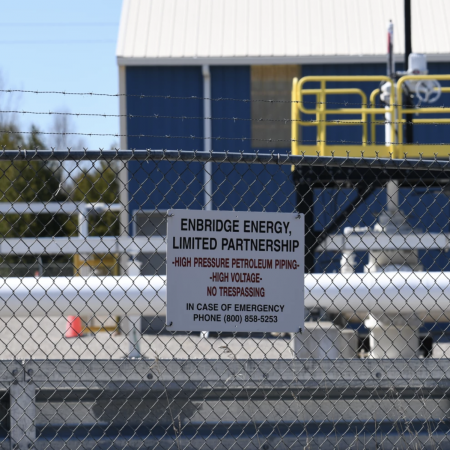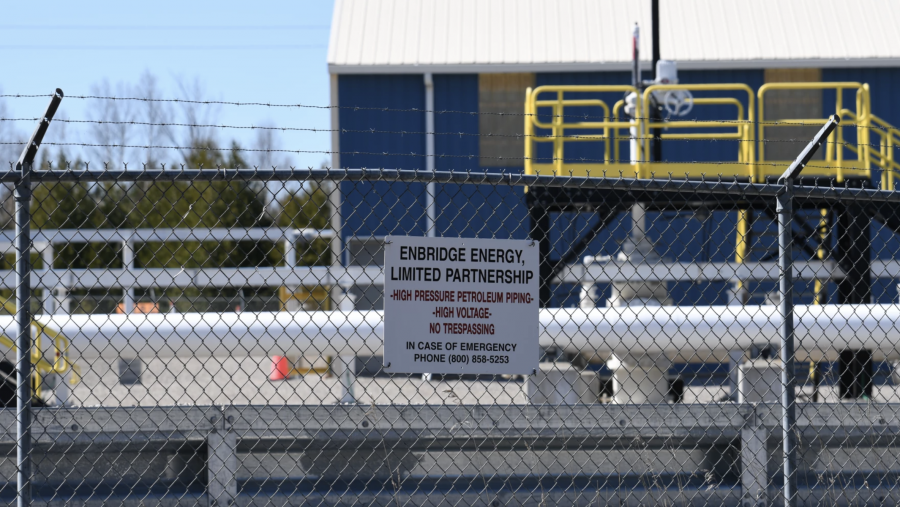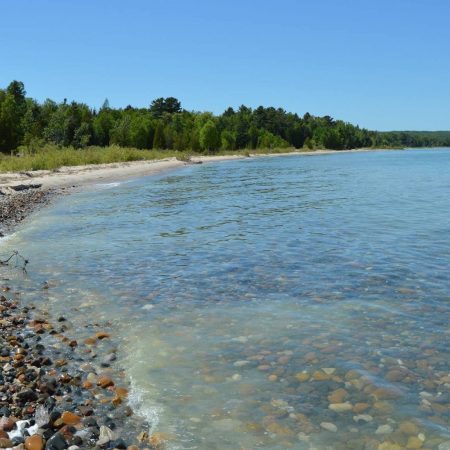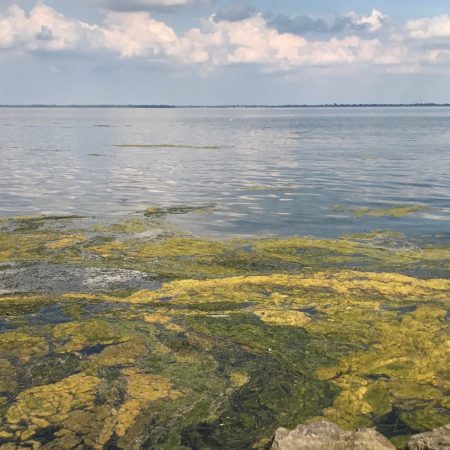The Metro: Enbridge’s Line 5 tunnel proposal might cause more harm than good, expert says
Enbridge’s Line 5 pipeline has been fueling debate for decades.
It carries millions of gallons of crude oil and natural gas liquids each day from Superior, Wisconsin to Sarnia, Ontario. A critical segment of this pipeline lies exposed on the lakebed of the Straits of Mackinac.
It’s a location University of Michigan scientists call the “worst possible place” for an oil spill. That’s because of strong currents that could rapidly spread contaminants across the Great Lakes.
Now, Enbridge wants to build a $500 million dollar tunnel deep under the lakebed to shield the pipeline, prevent an oil spill, and repair aging infrastructure. A new environmental report from the Army Corps of Engineers says it will likely accomplish these things.
But that would come at a cost. Habitats could be destroyed, wildlife disrupted, and tribal rights threatened.
Meanwhile, legal fights continue. Michigan’s governor and Indigenous communities want Line 5 shut down, citing environmental and treaty violations.
Enbridge insists federal law protects the pipeline.
The Army Corps of Engineers is asking people to weigh in on its new report about the tunnel project through the end of the month.
So, it’s a good time to ask: is this tunnel a safe solution or a continuation of something that violates indigenous rights and threatens the environment?
Andrew Buchsbaum, an expert on environmental law at the University of Michigan, has been part of the movement to stop Line 5. He joined The Metro to discuss the new report.
The Metro invited an Enbridge spokesperson to discuss Line 5 and its proposed oil tunnel, but didn’t hear back before the show’s air date.
Use the media player above to hear the full conversation.
Listen to The Metro weekdays from 10 a.m. to noon ET on 101.9 FM and streaming on-demand.
Trusted, accurate, up-to-date.
WDET strives to make our journalism accessible to everyone. As a public media institution, we maintain our journalistic integrity through independent support from readers like you. If you value WDET as your source of news, music and conversation, please make a gift today.Donate today »
More stories from The Metro
The post The Metro: Enbridge’s Line 5 tunnel proposal might cause more harm than good, expert says appeared first on WDET 101.9 FM.











